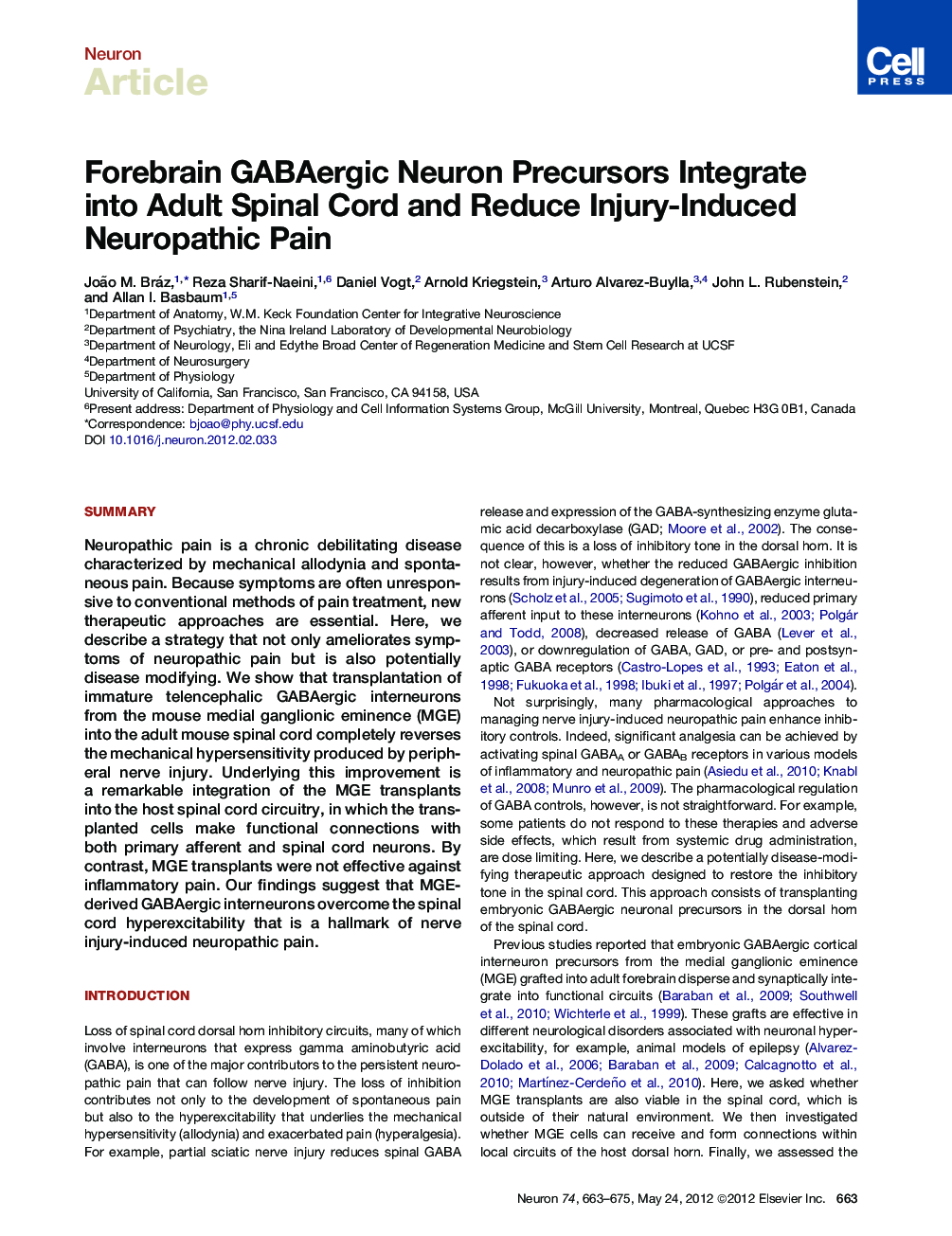| Article ID | Journal | Published Year | Pages | File Type |
|---|---|---|---|---|
| 4321804 | Neuron | 2012 | 13 Pages |
SummaryNeuropathic pain is a chronic debilitating disease characterized by mechanical allodynia and spontaneous pain. Because symptoms are often unresponsive to conventional methods of pain treatment, new therapeutic approaches are essential. Here, we describe a strategy that not only ameliorates symptoms of neuropathic pain but is also potentially disease modifying. We show that transplantation of immature telencephalic GABAergic interneurons from the mouse medial ganglionic eminence (MGE) into the adult mouse spinal cord completely reverses the mechanical hypersensitivity produced by peripheral nerve injury. Underlying this improvement is a remarkable integration of the MGE transplants into the host spinal cord circuitry, in which the transplanted cells make functional connections with both primary afferent and spinal cord neurons. By contrast, MGE transplants were not effective against inflammatory pain. Our findings suggest that MGE-derived GABAergic interneurons overcome the spinal cord hyperexcitability that is a hallmark of nerve injury-induced neuropathic pain.Video Abstract To view the video inline, enable JavaScript on your browser. However, you can download and view the video by clicking on the icon belowHelp with MP4 filesOptionsDownload video (20354 K)
► Transplanted embryonic cortical inhibitory precursors thrive in adult spinal cord ► Transplanted cells differentiate into GABAergic interneurons ► Transplanted GABAergic cells make functional connections in the spinal cord ► Transplanted GABAergic cells reverse nerve injury persistent pain
